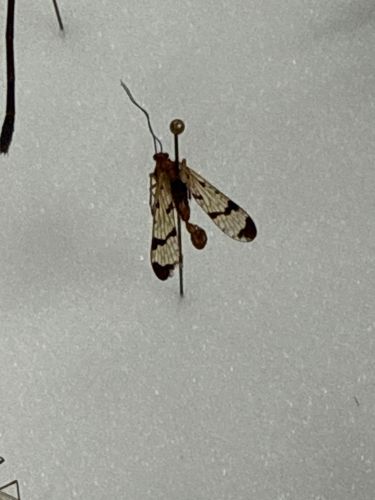Common Scorpionfly
Scientific Name: Panorpa communis
Order & Family: Mecoptera, Panorpidae
Size: 15-25 mm (body length), with a wingspan of 30-35 mm.

Natural Habitat
Damp, shaded areas with dense vegetation, often near woodlands, hedgerows, and stream banks.
Diet & Feeding
Mainly feeds on dead or dying insects, nectar, and fruit. They are known scavengers.
Behavior Patterns
Adult scorpionflies are often seen perched on vegetation. Males are known for presenting 'nuptial gifts' (usually prey items) to females during courtship. The male's enlarged, scorpion-like genitalia at the end of the abdomen are used to grasp the female during mating. Larvae live in the soil and feed on decaying organic matter and small insects.
Risks & Benefits
No known risks to humans. They play a beneficial role in the ecosystem as scavengers, helping to decompose dead insects and organic matter, thus contributing to nutrient cycling.
Identified on: 9/19/2025